
Abbreviations
| AAN | Archive of New Acts, Warsaw (Archiwum Akt Nowych) |
| AGK ZHP | Archive of the Main Quarters of the Union of Polish Scouting, Warsaw (Archiwum Gwnej Kwatery Zwizku Harcerstwa Polskiego) |
| APRz | State Archive in Rzeszw (Archiwum Pastwowe w Rzeszowie) |
| APRz PTTK | State Archive in Rzeszw, Polish Society of Tourism and Local Studies, Regional Executive in Rzeszw 195076 (Archiwum Pastwowe w Rzeszowie, Polskie Towarzystwo Turystyczno-Krajoznawcze, Zarzd Okrgowy w Rzeszowie 195076) |
| APRz-Sanok | State Archive in RzeszwSanok Branch (Archiwum Pastwowe w Rzeszowie, Oddzia w Sanoku) |
| APRz-Skoyszyn | State Archive in RzeszwSkoyszyn Branch (Archiwum Pastwowe w Rzeszowie, Oddzia w Skoyszynie) |
| AT-OeSTA | Austrian State Archive (sterreichisches Staatsarchiv) |
| CAW | Central Military Archive, Rembertw (Centralne Archiwum Wojskowe) |
| DAIFO | The State Archive of the Ivano-Frankivsk Oblast (Derzhavnyi Arkhiv Ivano-Frankivskoi Oblasti) |
| DALO | The State Archive of the Lviv Oblast (Derzhavnyi Arkhiv Lvivskoi Oblasti) |
| GOPR | Mountain Volunteer Search and Rescue Organization (Grskie Ochotnicze Pogotowie Ratunkowe) |
| IKC | Illustrated Daily Courier (Ilustrowany Kurier Codzienny) |
| Muzeum Tatrzaskie | Archive of the Tatra Museum, Zakopane (Archiwum Muzeum Tatrzaskiego) |
| Ossolineum | Manuscript Collection of the Ossolineum, Wrocaw (Zakad Narodowy im. Ossoliskich) |
| OUN | Organization of Ukrainian Nationalists (Orhanizatsiia Ukranskykh Nationalistiv) |
| Pam. Tow. Tatrz. | Tatra Society Yearbook (Pamitnik Towarzystwa Tatrzaskiego) |
| PGR | State Agricultural Farm (Pastwowe Gospodarstwo Rolne) |
| PRL | Polish Peoples Republic (Polska Rzeczpospolita Ludowa) |
| PTTK | Polish Society of Tourism and Local Studies (Polskie Towarzystwo Turystyczno-Krajoznawcze) |
| PZPR | Polish United Workers Party (Polska Zjednoczona Partia Robotnicza) |
| SKPB | Student Club of Beskid Guides (Studenckie Koo Przewodnikw Beskidzkich) |
| TsDIAL | The Central State Historical Archive in Lviv (Tsentralnyi Derzhavnyi Istorychnyi Arkhiv u Lvovi) |
| UPA | Ukrainian Insurgent Army (Ukranska Povstanska Armiia) |
| USSR | Union of Soviet Socialist Republics |
| Wielka Encyklopedia Tatrzaska | Zofia Radwaska-Paryska and Witold Henryk Paryski, Wielka Encyklopedia Tatrzaska [Great Tatra Encyclopedia] (Poronin: Wydawnictwo Gorskie, 1995) |

Acknowledgments
While still the greenest of graduate students, I once chatted with Simon Schama, who at the time was working on his pathbreaking Landscape and Memory, about what landscape Poles identified with most. He postulated that the primeval forest of Biaowiea took precedence, yet I thought that perhaps it was Polands mountains that figured most prominently (no pun intended). The seed for this book, thus, was planted, although it would take many years to germinate, not to mention mature.
Given the elapsed time, I could easily write a full-length chapter acknowledging all the help and support I have received over the years. Research for this book was supported in part by a fellowship from IREX (International Research and Exchanges Board), with funds provided by the United States Department of State through the Title VIII Program. Neither of these organizations is responsible for the views expressed herein. In addition to the IREX fellowship, a generous Senior Grant as part of the Thesaurus Poloniae Fellowship Program, run by the International Cultural Centre in Krakw, likewise took me to Poland. I thank the helpful leadership and staff of numerous archives, museums, libraries, and centers, in particular Andrzej Czesaw ak of the Central Military Archive in Rembertw, Lieutenant Andrzej Wesoowski of the Central Military Library in Warsaw, and Jerzy Kapon and Wiesaw A. Wjcik of the Centralny Orodek Turystyki Grskiej PTTK in Krakw.
I also received fellowship support for two research trips to Ukraine: a summer traveling grant courtesy of the Harvard Ukrainian Research Institute as well as a Fulbright grant. I am grateful to the staffs of the various archives in Lviv and Ivano-Frankivsk, the Stefanyk Library in Lviv, and the Hutsul Museum in Kolomyia.
An early home base for me was the Watson Institute for International Studies at Brown University, where I worked under Omer Bartov on a project entitled Borderlands: Ethnicity, Identity, and Violence in the Shatter-zone of Empires Since 1848. A Eugene and Daymel Shklar fellowship at the Harvard Ukrainian Research Institute (HURI) provided me with the time to get down to serious writing as well as present an aspect of my work as part of HURIs lecture series. My decades-long affiliation with HURI has been wonderful and stimulating. I also spent several years in Vienna, Austria, as part of the Doktoratskolleg Das sterreichische Galizien und sein multikulturelles Erbe, under the inspiring and able leadership of Alois Woldan and Christoph Augustynowicz.
Special lecture invitations led me to Hamburg for the Third International Perspectives on Slavistics conference, to Nancy Shields Kollmanns seminar at Stanford, to the University of Chicago, to the Polish Academy of Arts and Letters (PAU) in Krakw, to the University of Basel, and to the Vienna branch of the Polish Academy of Sciences, where the audiences posed stimulating questions. I profited from comments made at a number of specialized conferences and workshops: the Polish Studies Conference at the University of Michigan; the international interdisciplinary conference Multiculturalism: The Central European Experience and Its Impact on Identity-Formation in a Globalized World in Bellagio, Italy; the workshop Modern German Environmental History in European Perspective at the Center for European Studies at Harvard University; and the Mountain Landscapes Workshop at GWZO, Leipzig. Helpful feedback from both panelists and the audience was forthcoming at a number of panels held at the conventions of the Association for Slavic, East European, and Eurasian Studies, the Association for the Study of Nationalities, the Deutscher Historikertag, and the Polish Institute of Arts and Sciences of America. I am indebted to Professor Jacek Kolbuszewski and Ewa Grzda of the Pracownia Bada Humanistycznych nad Problematyk Grsk (The Workshop of Humanistic Research on Mountain Issues) in Wrocaw for their years of support and opportunities to present at their annual conference and publish in their periodical GryLiteraturaKultura.
Sections of the text will be familiar to some readers, although much has been reworked and recontextualized. Pieces of Part I originally appeared in Constructing a Polish Landscape: The Example of the Carpathian Frontier, Austrian History Yearbook 39 (2008): 4565; and Between Highlanders and Lowlanders: Perceptions of the Jewish Presence in the Tatras in the Nineteenth Century, in Galizien in Bewegung: WahrnehmungenBegegnungenVerflechtungen, edited by Magdalena Baran-Szotys, Olena Dvoretska, Nino Gude, and Elisabeth Janik-Freis (Wiener Galizien-Studien, 1) (Vienna: V & R unipress, 2018), 14153. Reprinted with permission, chapter 5 is a modified version of Discovering the Galician Borderlands: The Case of the Eastern Carpathians, Slavic Review

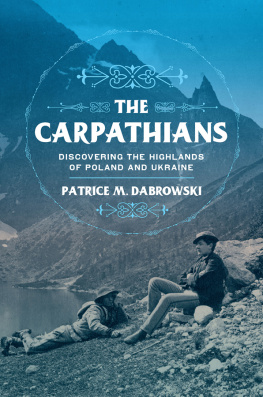

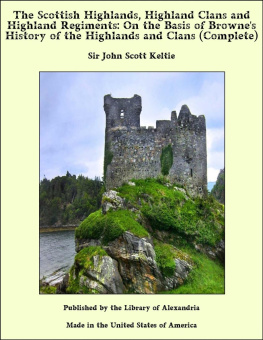

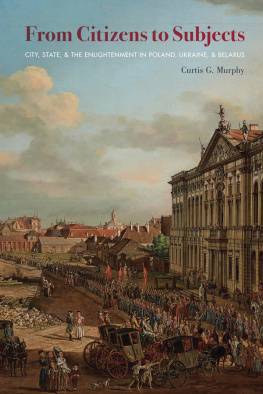
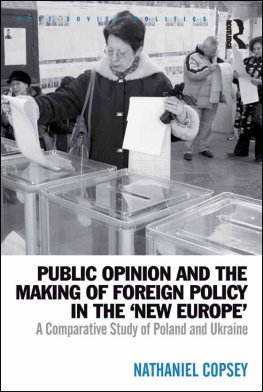

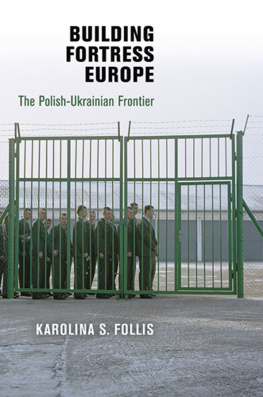
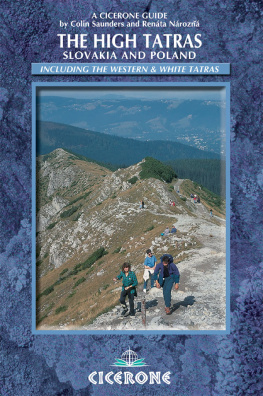

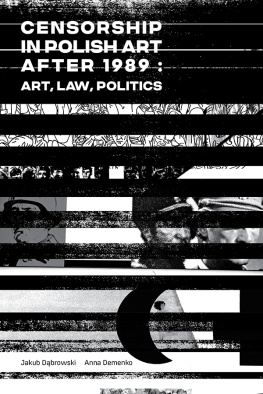
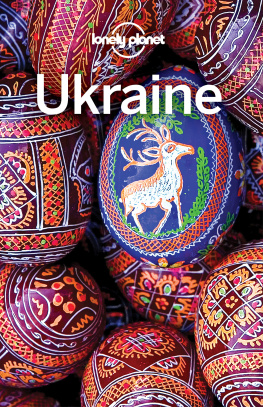
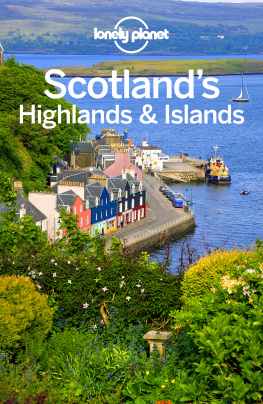
 Abbreviations
Abbreviations